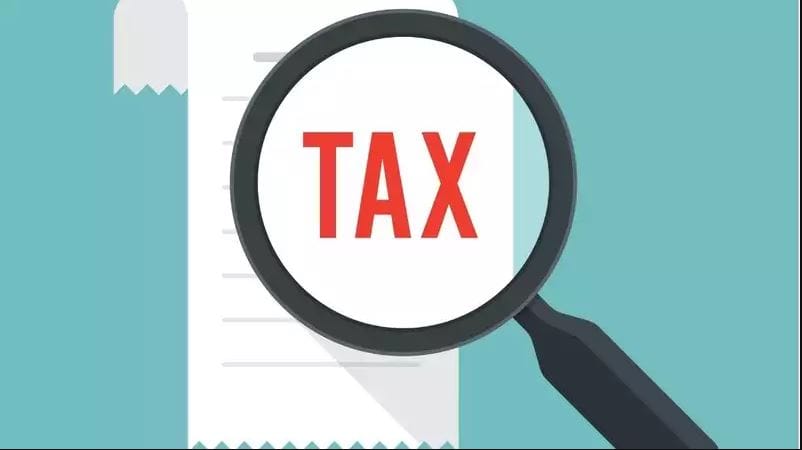Impact of the Kenya Finance Bill 2024 on Electric Vehicles.
The Kenya Finance Bill of 2024, a comprehensive legislative proposal aimed at reforming the nation's fiscal policies, is set to have significant implications for various sectors, including the burgeoning electric vehicle (EV) market.


The Kenya Finance Bill of 2024, a comprehensive legislative proposal aimed at reforming the nation's fiscal policies, is set to have significant implications for various sectors, including the burgeoning electric vehicle (EV) market.
As Kenya continues its journey towards a greener and more sustainable future, the provisions in this bill could either accelerate or impede the adoption of electric vehicles.
Key Provisions Affecting Electric Vehicles
- Tax Incentives and Exemptions:
The Finance Bill 2024 includes specific tax incentives designed to encourage the purchase and use of electric vehicles. These incentives could take the form of reduced import duties, lower value-added tax (VAT) rates, or even complete tax exemptions for EVs and EV components. By lowering the overall cost of acquiring electric vehicles, these measures aim to make EVs more affordable to the average consumer, thus fostering wider adoption. - Subsidies for EV Manufacturers and Importers:
To stimulate local production and importation of electric vehicles, the bill proposes subsidies for manufacturers and importers of EVs and EV-related infrastructure. These subsidies are intended to offset the higher initial costs associated with electric vehicle technology, encouraging more businesses to enter the EV market and expand their offerings. - Infrastructure Development Grants:
Recognizing the need for robust charging infrastructure, the Finance Bill 2024 allocates grants and funding for the development of EV charging stations. This includes subsidies for the installation of home charging units, public charging stations, and the integration of renewable energy sources to power these stations. Improved infrastructure is crucial for alleviating range anxiety and ensuring the practicality of using electric vehicles on a daily basis. - Environmental Levies on Conventional Vehicles:
The bill introduces higher environmental levies on traditional internal combustion engine (ICE) vehicles. These levies are designed to disincentivize the use of fossil fuel-powered cars by making them more expensive to own and operate. The revenue generated from these levies could be redirected towards supporting the electric vehicle sector, further encouraging a shift towards cleaner transportation options.
Potential Benefits for the EV Market
- Increased Adoption Rates:
The combination of tax incentives, subsidies, and improved infrastructure is likely to make electric vehicles more attractive to consumers. As the cost barrier decreases, more individuals and businesses may consider switching to EVs, leading to higher adoption rates and a more vibrant EV market. - Economic Growth:
By promoting local manufacturing and assembly of electric vehicles, the Finance Bill 2024 could spur economic growth and job creation. New opportunities in EV production, maintenance, and charging infrastructure development could emerge, benefiting various sectors of the economy. - Environmental Impact:
A significant increase in electric vehicle usage will contribute to a reduction in greenhouse gas emissions and air pollution. This aligns with Kenya’s commitment to environmental sustainability and its goals under international climate agreements. - Energy Independence:
The shift towards electric vehicles, particularly those powered by locally-sourced renewable energy, can reduce Kenya's dependency on imported fossil fuels. This enhances energy security and promotes the use of indigenous energy resources.
While the Kenya Finance Bill 2024 contains several provisions aimed at promoting the adoption of electric vehicles (EVs), there are potential negative impacts and challenges that could arise.
These include implementation challenges, economic implications, and unintended consequences that could hinder the growth of the EV market.
Potential Negative Impacts
1. Increased Costs for Conventional Vehicles
While higher environmental levies on internal combustion engine (ICE) vehicles are designed to discourage their use, this could disproportionately affect low-income individuals who cannot afford to switch to electric vehicles. The increased costs for owning and operating conventional vehicles might place a financial burden on those who rely on them for daily transportation.
2. Infrastructure and Implementation Challenges
Developing the necessary EV infrastructure, such as charging stations, requires significant investment and coordination. If the rollout of infrastructure is slow or poorly managed, it could lead to inadequate charging facilities, discouraging potential EV buyers. Additionally, implementing and enforcing the provisions of the bill could be challenging, especially in rural areas where infrastructure development may lag behind.
3. Market Disruption for Conventional Vehicle Industry
The push towards electric vehicles might disrupt the existing automotive industry, particularly businesses that are heavily invested in conventional vehicle sales and services. This could lead to job losses and economic challenges for those employed in sectors related to ICE vehicles, such as fuel stations, mechanics specializing in ICE vehicles, and parts suppliers.
4. Initial High Costs and Affordability Issues
Despite subsidies and tax incentives, the initial cost of electric vehicles may still be high for many consumers. The financial benefits of switching to an EV, such as lower operating costs and tax incentives, may not be immediately apparent to all potential buyers. This could slow down the rate of adoption, especially among middle and lower-income households.
5. Dependence on Importation
If Kenya remains heavily reliant on imported electric vehicles and components, it could face issues related to supply chain disruptions, fluctuating import costs, and trade policies. Encouraging local manufacturing is key, but this transition may take time and significant investment, during which the market could face instability.
6. Energy Demand and Grid Capacity
An increase in the number of electric vehicles will lead to higher electricity demand. If the national grid is not adequately prepared to handle this increased load, it could lead to energy shortages or increased reliance on non-renewable energy sources to meet demand. This would undermine the environmental benefits of switching to electric vehicles.
7. Market Saturation and Quality Concerns
Rapid growth in the EV market could lead to market saturation with varying quality standards. Ensuring that imported or locally manufactured EVs meet safety and performance standards is crucial. Without proper regulation and quality control, consumers might face issues with unreliable or substandard vehicles, which could damage the reputation of the EV market.
Challenges and Considerations
- Implementation and Enforcement:
Effective implementation and enforcement of the bill's provisions are critical. Without proper oversight, the intended benefits may not materialize. The government will need to establish clear guidelines and robust monitoring mechanisms. - Public Awareness and Education:
For the incentives and infrastructure to be fully effective, public awareness campaigns will be necessary. Educating consumers about the benefits of electric vehicles and how to access incentives will play a crucial role in driving adoption. - Infrastructure Development Pace:
While the bill proposes significant support for infrastructure development, the pace at which charging stations are installed and operational will be a determining factor in the successful adoption of electric vehicles. Coordination between public and private sectors will be essential.
Conclusion
While the Kenya Finance Bill 2024 presents significant opportunities for promoting electric vehicles, it is important to acknowledge and address the potential negative impacts.
Careful planning, effective implementation, and comprehensive support mechanisms are essential to mitigate these challenges.
By balancing the push for EV adoption with considerations for economic equity, infrastructure readiness, and market stability, Kenya can successfully navigate the transition to a greener transportation future.
Through a combination of tax incentives, subsidies, and infrastructure investments, the bill aims to reduce the financial and logistical barriers to EV adoption.
However, the successful realization of these benefits will depend on effective implementation, public awareness, and the timely development of the necessary infrastructure.
As Kenya moves towards a more sustainable future, the provisions in this bill could play a pivotal role in accelerating the transition to electric mobility.




